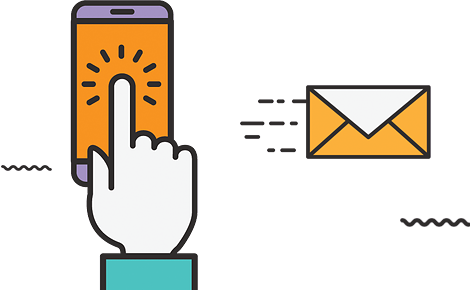With so much shopping done online these days, it’s crucial to have an effective eCommerce design if you want to succeed.
When you are selling a product or service, the very first visual element a customer sees are your eCommerce website. Your web design must be creative, informative, and inviting to help draw the customer into your product. But when designing your eCommerce website, you don’t want to compromise user experience. Developing an eCommerce web design that has all the necessary elements is not an easy task.
So, how do you build an eCommerce website that drives sales for your business? As a provider of web design and development services, we’re here to share tips on ensuring your online store is designed with the right features to boost your conversions.
When you design your eCommerce website, think about how you can create a captivating user experience. These tips can help you boost conversions:
1. Keep It Simple
When creating your eCommerce website, remember to keep it simple. Too many elements on the page can distract customers from completing a sale. So, try to stay away from too many banner ads, pop-ups, and colors.
Instead of distracting your customers, keep your design clean and simple. Focus on making sales and creating a straightforward way for customers to complete their transactions. You should create an easy, cohesive journey from the homepage to checkout if you want to lower bounce rates and boost conversions.
2. Urgency Is a Powerful Motivator.
You can increase your conversion rates by creating a sense of urgency. Many potential customers believe that products sell out quickly and may not be available later, so they’re willing to make a purchase now.
Use your eCommerce web design to create a sense of urgency, as it can increase conversion rates by over 330%. Here are some ways to do that: Change calls-to-action from “Shop Here” to “Shop Now.” You can also add phrases to your content that use words like “quickly,” “now,” or “today” to encourage visitors to act before they miss out on a great deal or product.
3. Prioritize Branding
When it comes to eCommerce brands, having a strong brand presence is key. Customers want to know that the brand they’re shopping with is trustworthy. If you don’t have an established brand presence, customers may assume that your business is trying to scam them and steal their sensitive information.
Building trust with your audience is essential to marketing success. Branding is the DNA of your business values, who you are and how you compare to competitors. Effective branding strategies generate connections and increase sales.
If you’re not sure what your brand stands for or what your target market wants, don’t worry! We can help. But first, ask yourself these questions:
- What would my brand look like as a person?
- If I could describe my brand in three words, what would it be?
- What sets me apart from my competitors?
- What do we do better than anyone else in the industry?
Once you’ve established your brand’s personality, use it to improve your eCommerce web design and social media profiles. This will not only help customers know who you are but also build trust with your target audience. The result? You’ll drive serious sales and take advantage of higher conversion rates.
4. Help Your Customers Avoid Unnecessary Checkout Steps.
These days, customers are driven by speed and efficiency when it comes to online shopping. With that in mind, it’s important to make sure your checkout process is as easy and quick as possible. One of the best ways to do this is with a one-click checkout process. This allows customers to skip the “add to cart” step and check out faster.
Even if you don’t add a one-click checkout to your site, streamline the process by eliminating extra steps and reducing cart abandonment rates. Incorporating a one-click checkout can shorten the process by 90%, reducing data entry for customers so they complete the checkout process more quickly.
5. Think Like a Customer
Another way to improve your eCommerce web design is to go back to basics. Think about what your visitors want and need on a website. What do you look for in an eCommerce site? Ultimately, you’ll want to create an easy-to-use, well-designed, hassle-free site that connects with visitors.
We make sure our clients think about how their visitors will experience the site. How can you design a layout that’s easy to navigate? How should you organize your products to make sense for your users? What further action can be taken to simplify the checkout process?
6. Add Clear Calls-to-Action
Calls-to-action are crucial elements of the sales funnel process. Having clear CTAs is essential to converting website traffic into sales. For example, you might want to use terminology such as “Buy Now” or “Add to Cart” to grab your visitors’ attention and encourage them to click.
You’ll need to use contrasting colors, unique design elements, and other tactics to increase conversions. To find suitable options, consider the intent of your web page and align your buttons with that intent.
7. Unlock the Power of Color in Your Brand
Creating the right color scheme for your eCommerce website can be a challenge. It’s not as simple as choosing colors you like; it requires more thought than that. Branding professionals use a whole psychology of colors to increase sales, so choosing your web design colors requires more thought than simply picking your favorite color.
Color is a powerful tool that can drive sales when used correctly. Different colors inspire different feelings and emotions, so use them to inspire specific actions on your eCommerce site.
8. Always Have an SSL Certificate
An SSL certificate is important if you want to increase sales and reduce cart abandonment rates. A locked padlock will be displayed next to your website’s URL, letting visitors know that their information is secure and protected from data breaches.
A Secure Sockets Layer (SSL) certificate is an encryption tool that protects your customers’ sensitive information, such as credit card numbers, during a transaction. This tool also helps prevent fraud if your business experiences a data breach.
Having a closed lock in the search bar can increase your conversion rates by 42%. The bottom line? Visitors are more likely to share their personal data and convert to paying customers when they know their information is safe and secure.
9. Choose Images That Are High in Quality.
The images you use on your website can be just as important to your visitors as the content itself. In eCommerce web design, you need to incorporate high-quality, relevant images into your design to increase conversions. This is particularly important for product images.
If you want customers to trust your business, you need quality images of the items you sell. Before completing your website design, consider getting professional images of all your products. This will help increase conversion rates as well as build confidence and trust in your business.
10. Let Your Customers Choose How They Want to Pay.
Nowadays, there’s no shortage of ways to pay for online products and services. Direct debit, bank transfers, digital wallets, Bitcoin—the list goes on. It’s important to provide options that meet your audience’s needs. Talk to your eCommerce web design team about the top three payment methods in your industry. Offering the right payment options can increase conversion rates by as much as 30%.
11. Make Your Content Scannable.
People who visit your website typically read just 20% of the text on a page. Instead, they scan the page for key information. To get your point across, you’ll need to make your content scannable. So, how do you do that?
Make your content easier to read by breaking sentences into shorter paragraphs, using bold fonts for important information, and employing bulleted lists to separate different topics.
If your content is easy to view and read, your readers will be more likely to absorb your message. Scannable content can help your business make a sale.
12. Use Reviews to Your Advantage.
Reviews can help you make more sales. People like to hear from other customers who have direct experience with your brand, and product or company reviews can convert viewers’ interest in your products to a sale.
If you want to build trust with your customers, show them the positive reviews that other customers have left for your products. You can do this by displaying customer reviews directly on your eCommerce website, or you could create a social media profile for each of your products and include these profiles in your web design.
13. Make Your Ecommerce Web Design More Professional.
Ultimately, the purpose of your online store is to encourage visitors to purchase something from your company. This means providing a safe and secure environment in which sensitive information, such as credit card numbers, can be shared. If your website doesn’t look professional, visitors will unlikely feel comfortable doing so.
Stay professional with your site by making sure there are no typos or misspellings, keeping your design and colors consistent from page to page, making sure all buttons and links work, and using high-quality images.
When you want to build trust with your customers, you need an eCommerce website that will attract them. A good web design company can help you achieve this goal by creating a reliable website for your business.
14. Make Your Website Easy to Use On Mobile Devices.
Mobile responsiveness is not only important, but also necessary. Most of the web traffic comes from mobile devices—over 50 percent worldwide. If your site isn’t mobile-friendly, you may be putting yourself at a disadvantage in comparison to competitors who have taken the necessary steps to ensure their sites are easy to use on small screens.
If you want to rank on Google, you’ll need a mobile-responsive site today. Google and other popular search engines set standards that require websites to be mobile-responsive today. Ensuring your site is optimized for mobile use can improve SEO strategies and increase sales.
15. Make It Easy to Navigate
It’s a fact of life: People hate to navigate websites that are impossible to navigate. You can’t afford to have your website visitors click around several menus to find what they’re looking for.
Help your customers find what they’re looking for. Make categories and product pages simple and easy to navigate by including filter options to help potential customers find products by color, size, or price. The easier it is for your customers to find what they’re looking for, the easier it will be for them to make a purchase.
So, the bottom line is that eCommerce web design requires a great deal of organization and collaboration. It takes a business owner who understands how design choices affect their bottom line, and it takes an experienced design partner to ensure that these choices are made as effectively as possible. But with the right partnership in place, it’s possible to build an online store that appeals to shoppers and creates long-term profits for your business.
Contact our team at Funtastic WD to analyze your current strategy and set a plan that brings you better results and builds a better brand.





